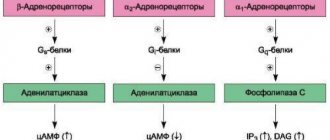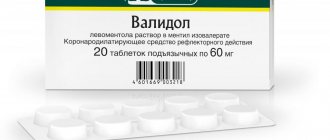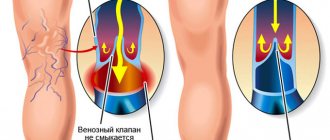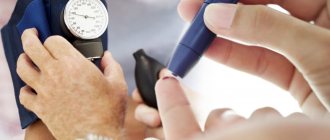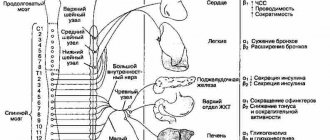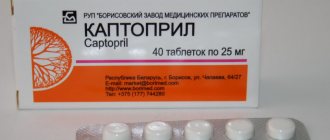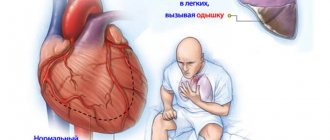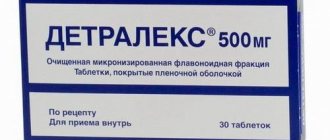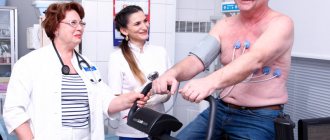Fibrates are a group of drugs that lower the levels of triglycerides, low and very low density lipoproteins (LDL, VLDL), cholesterol and increase the levels of high density lipoproteins (HDL). Before the invention of statins, they were widely used to treat atherosclerosis. Currently, these drugs are used to treat patients with high triglycerides, low HDL.
The first drug in this group was clofibrate, which was widely used in the 60s and 70s. Then they were replaced by second and third generation drugs: fenofibrate, bezafibrate, ciprofibrate, gemfibrozil.
What are fibrates - principle of action
Fibrates are classified as lipid-lowering drugs - drugs that reduce the value of certain lipid fractions, lipid-like substances (cholesterol). These drugs are derivatives of fenofibric acid, which gives them their name. The mechanism of action of fibrates is based on their ability to:
- Increase the activity of the enzyme lipoprotein lipase, which activates the breakdown of chylomicrons and LDL containing triglycerides;
- an increase in the number of liver receptors that take up and process LDL
- increase the excretion of cholesterol with bile, slightly reduce the synthesis of sterols
- Stimulation of apolipoprotein A1, synthesis of apolipoprotein A1.
Triglycerides (neutral fats), HDL, LDL and cholesterol decrease, and HDL increases. Changing the concentration of various products of fat metabolism has a positive effect on the prevention of the progression of atherosclerosis, as well as the development of its complications - coronary heart disease, heart attack, cerebral aneurysm, stroke.
Medicines also reduce:
- dietary dyslipidemia;
- fibrinogen (blood clotting factor);
- uric acid;
- GGT activity, alkaline phosphatase;
- reduces blood viscosity.
Fibrates are well absorbed from the gastrointestinal tract. Unlike statins, they are eliminated primarily by the kidneys.
Mechanism of action
The functional activity of a group of drugs is based on a system of positive, beneficial effects.
- Accelerating the production of good proteins. The so-called apolipoproteins A1 and A2. Essentially, these are the building blocks that make up “good cholesterol” (high-density lipoproteins). When passing through the vessels, they, like cleaners, collect bad fats and carry them along with them. Substances are eliminated naturally.
- Activation of the enzyme lipoprotein lipase. This compound can quickly break down bad cholesterol. Including such a fraction as low and very low density lipoproteins. Triglycerides are also affected by fibrate drugs. However, they should not be overestimated. With a higher dosage, especially with an excess of medications, everything only gets worse.
- The drugs increase the amount of cholesterol excreted from the body. This process occurs through bile. Down the digestive tract, the substance is excreted naturally. However, in some pathological processes everything is exactly the opposite. Reabsorption of fats in the lower gastrointestinal tract is observed. In these situations, the use of the product is inappropriate.
- Activation of special liver receptors. They trap cholesterol and fatty compounds in general passing through them. They actively process them, turning them into harmless substances.
Fibrates have a positive effect on lipid metabolism. But this is not the only beneficial effect of medications in this group.
Indirectly, they also affect auxiliary negative factors that cause atherosclerosis and lead the patient to a sad ending.
- Fibrinogen production decreases. Meanwhile, this is a coagulation factor. In large quantities it provokes thrombus formation. This is an additional moment that can take the patient’s life.
- The rheological properties of blood are normalized. As a rule, atherosclerosis occurs in a system with disturbances in the state of liquid tissue. Hypercoagulability is a disorder in which blood clots too quickly.
- The level of uric acid decreases. Therefore, it can be expected that urate salt crystals will not be deposited in the joints. This is a separate positive action. It has nothing to do with atherosclerosis.
- When consuming fibrates, regardless of diet, the concentration of fat remains at the same level. Even despite the human diet. This occurs because the active substances are able to encapsulate and remove or break down lipids. Fatty compounds do not accumulate and are not deposited on the walls of the arteries.
The action of fibrates is complex, so the drug can be used as a monotherapeutic agent. That is, for isolated treatment with one medication.
There are exceptions. Dangerous forms of the pathological process, when it has already started, additionally use statins. In complex.
The question remains at the discretion of the attending endocrinologist. Collaboration with other specialists is also possible. Hematologist, gastroenterologist.
Indications for use
Fibrate drugs are most effective in reducing triglyceride levels (20-55%), increasing HDL levels (10-30%) and reducing cholesterol (10-25%) and LDL (10-35%). Therefore, they are most actively used in the treatment of conditions accompanied by an increase in neutral fats.
The use of fibrates is justified when triglyceride levels are above 10 mmol/l, as well as in patients with rare type III hyperlipidemia. Also, drugs are prescribed when diet is ineffective as a replacement for statins for hyperlipidemia types A, B, V, V.
Due to the low effectiveness of drugs in lowering LDL cholesterol, they are rarely used on their own. If the neutral fat level is high, the HDL level is low, the patient may be prescribed fenofibrate in addition to statin therapy.
If triglyceride levels are greater than 5.6 mmol, the risk of pancreatitis increases. Taking fibric acid derivatives prevents the development of pancreatitis.
Prescribing fenofibrate and gemfibrozil to patients with coronary heart disease and patients after arterial surgery reduces cardiovascular mortality and slows the progression of coronary atherosclerosis. These two drugs improve the prognosis of patients with diabetes by preventing the development of some of its complications.
Doses and treatment regimens depend on the active substance:
- gemfibrozil - 2 times a day, 600 mg;
- bezafibrate 3 times a day, 200 mg;
- ciprofibrate 1 time/day 100 mg;
- fenofibrate 1 time/day 200 mg;
- etofibrate 500 mg once daily.
Tablets or capsules are best taken once daily with breakfast. The most active, fatty, neutral lipoproteins are synthesized in the morning. The tablets must not be chewed, crushed, dissolved or the contents of capsules opened.
The effectiveness of the drug is assessed after 4 weeks. By that time they had reached maximum efficiency.
It is recommended to supplement the medications with non-drug methods of reducing triglycerides and cholesterol: healthy eating, exercise, quitting smoking, and avoiding stress.
Indications
There are not many reasons for its use. There are several types of hyperlipidemia. Not everyone is corrected with statins and nicotinic acid. There are certain forms of the pathological process that require the use of fibrates.
Among them:
Hyperlipidemia type IIb
Dangerous species. With this disease, the concentration of triglycerides and very low density lipoproteins (VLDL) increases.
The deviation occurs in approximately 10% of patients. In the early stages, lipids begin to be deposited on the walls of blood vessels. Which can ultimately lead to a heart attack or stroke.
Treatment consists of the use of fibrates as the main drugs. In addition, nicotinic acid and statins are necessarily prescribed.
Hyperlipidemia type III
An extremely rare type of pathological process. Accompanied by an increase in the concentration of chylomicrons and intermediate density lipoproteins (IDLP).
The disorder is considered hereditary. This has been scientifically proven.
It is extremely rare. We are talking about hundredths of a percent. Approximately 0.01-0.02% of situations occur in this form of the disease.
Fibrates are mainly used for treatment. Most often - Gemfibrozil as the main one.
Hyperdlipidemia type V
It occurs quite often, in approximately 3% of the bulk of clinical cases. The pathological process is accompanied by the growth of chylomicrons and very low density lipoproteins.
For obvious reasons, this form of the disorder is almost guaranteed to cause a buildup of lipids on the vessels from the first days. Therefore, treatment begins immediately.
Fibrates are mainly used. Statins and nicotinic acid are sometimes used.
In addition to the above indications, atherosclerosis that has already begun stands apart. With the deposition of cholesterol plaques, the formation of large layers.
Read about all types of hyperlipidemia, development mechanisms and treatment methods in this article.
List of the best fibrates
Modern fibrates come in three generations:
- The first is clofibrate;
- 2. gemfibrozil, bezafibrate;
- 3. fenofibrate, ciprofibrate.
The once popular clofibrate is now practically not used. This drug has been shown to promote the development of malignant tumors of the bile ducts and some types of gastrointestinal cancers. Microbeads have been found to be the most effective form of fibrate. It is better absorbed by the body and much more effective.
Gemfibrozil
Structurally, gemfibrozil is closely related to clofibrate, which is less toxic. Effectively reduces triglycerides and LDL in patients who do not respond to diet or other lipid-lowering drugs. In case of hereditary lipoprotein lipase deficiency, do not use. Gemfibrozil is rarely prescribed these days. Gradually it was replaced by more effective drugs.
Fenofibrate
Fenobrate is the most commonly prescribed fenofibric acid derivative. Compared to other fibrates, it has the additional property of reducing uric acid levels. This action of the drug is used to treat patients with gout. Fenofibrate reduces the likelihood of diabetes complications: polyneuropathy, kidney and retinal diseases. Sold under the trademarks Traicor (France), Lipantil 200 M (France), Fenofibrate Canon (Russia), Exlip (Turkey).
A nicotinic acid
This drug has been used to treat hyperlipidemia since 1955. Nicotinic acid (niacin) is converted in the human body into nicotinamide, which inhibits the lipolysis of triglycerides in adipose tissue. This drug reduces the synthesis of VLDL, the content of LDL, cholesterol and triglycerides, and also increases the level of HDL by 15-30%. In addition, niacin helps improve blood microcirculation and prevents the development of cardiovascular diseases.
The effect of taking niacin appears already 1-4 days after the start of treatment. However, about 40% of patients soon abandon this drug due to its poor tolerance. It can cause diarrhea and vomiting, hot flashes and a feeling of heat. In such cases, nicotinic acid derivatives are prescribed, the most popular of which is xanthinol nicotinate.
Contraindications
Fibrates are not prescribed to patients with liver or kidney disease. This does not apply to mild forms of pathology. Most tablets or capsules contain lactose. For this reason, the drug is contraindicated in patients with lactose intolerance, lactase deficiency, and galactosemia.
Fibrates should not be prescribed to patients suffering from alcoholism or biliary tract diseases.
Besafibrate and ciprofibrate are contraindicated in pregnant women. Fenofibrate and gemfibrozil are rated fetal exposure category C. This means that animal studies have shown a risk to the developing baby, but there have been no adequate studies in women. Therefore, drugs in this category are not recommended for pregnant women, unless the benefit to their body outweighs the possible harm to the fetus.
These drugs are prescribed only to adults. Their safety for children has not been confirmed by studies.
When taking tablets, you should check the level of liver enzymes, creatine phosphokinase and blood creatinine at least once every 3 months.
Side effects of latest generation fibrates
Side effects of fibrates are usually minimal and short-lived. The most common complaints are gastrointestinal discomfort, nausea, headache and rash. Such symptoms occur in 5-10% of patients.
Each representative of the fibrate group has its own list of side effects. But there are a number of complications that are typical for most medications:
- changes in the composition of bile, which increases the risk of developing cholelithiasis (1st-2nd generation drugs);
- hepatitis;
- flatulence;
- inflammation of the pancreas;
- renal failure;
- photosensitivity;
- arrhythmia;
- muscle inflammation;
- myopathies;
- rhabdomyolysis;
- General weakness;
- decreased potency (very common when taking cyclofibrate).
Side effects
Antilipid medications are quite difficult to tolerate. Adverse events occur in approximately 1-5% of cases. However, they usually do not pose a danger in themselves.
If we talk about specific side effects, they can be grouped into several types:
- Allergic reactions. They do not always indicate drug intolerance. This result is possible if the patient sharply increased the dosage or began taking other pharmaceuticals in parallel.
- Dysfunctions of the nervous system. The most common disorders that develop are vertigo and headache. Coordination disorders. Drowsiness is possible. People prone to depression develop dysthymic episodes. My mood drops.
- Patients of both sexes experience a decrease in sexual desire. Potency also suffers in men. Although these side effects are rare.
- The hematopoietic system also suffers. Possible anemia. The number of white blood cells in blood samples also decreases. This is normal when taking drugs from the fibrate group.
- Joint pain and discomfort in skeletal muscles occur. There may be a decrease in tolerance to mechanical loads due to a feeling of weakness. Vatness.
In some cases, blurred vision develops. Possible baldness. Partial, but in representatives of both sexes at once. This happens due to the activation of male hormones.
Attention:
For patients with hypertension, a side effect such as hypokalemia is dangerous. When there is not enough potassium in the body.
This can negatively affect the condition of the heart and blood vessels. Possible risks. Therefore, it is necessary to regularly check potassium levels in the blood. If necessary, take supportive medications, such as Asparkam. All potassium-containing drugs are described here.
With the proper dosage and correct selection of the drug, there is every chance to minimize the risk of side effects.
Fibrate analogues
Fibrates are not the only drugs that are intended to normalize fat metabolism products. The group of lipid-lowering drugs includes:
- Statins (HMG-CoA reductase inhibitors) are the most powerful drugs with versatile effects. They block cholesterol synthesis, thereby reducing the concentration of sterols, LDL, triglycerides and increasing HDL. Statins reduce the size of atherosclerotic deposits;
- Bile acid sequestrants (cholestyramine, colestipol) are drugs that bind bile acids in the intestine. They block the absorption of bile acids back into the blood. The body must synthesize new bile acids from cholesterol, which leads to a decrease in the concentration of sterol, as well as LDL containing it;
- Ezetimibe, a drug that slows down the absorption of cholesterol from the gastrointestinal tract. It can be used together with statins or as a standalone drug if it is contraindicated;
- Vitamin PP (vitamin B3, nicotinic acid) - stops the synthesis of LDL, reduces the concentration of triglycerides in the blood, increases the concentration of HDL. The action of the vitamin is relatively fast - after 4-5 days. It is rarely used due to many side effects;
- Omega-3 fatty acids (omacor) - used to normalize triglyceride levels as an alternative to fibrates in addition to statin treatment.
All these drugs can replace each other, but not all diseases. The most universal drugs are statins (Table 1).
Table 1: Treatment of primary hyperlipoproteinemia.
Classification
The following lipid-lowering drugs are sold in regular and online pharmacies:
- to reduce cholesterol levels in the blood (atorvastatin, rosuvastatin, pitavastatin, lovastatin, fluvastatin, simvastatin, pravastatin, ezetimibe);
- to lower triglyceride levels (gemfibrozil, fenofibrate);
- reducing triglycerides and cholesterol (nicotinic acid).
These drugs normalize the lipid profile through various mechanisms. The most common are lipid-lowering drugs that activate lipoprotein uptake by stimulating LDL receptors located in the liver. In addition to them, there are drugs that activate cholesterol catabolism and block the synthesis of fatty acids and lipids. To achieve the best effect, combined lipid-lowering therapy is used, which may include statins, inhibitors of cholesterol absorption in the intestine, fibrates and nicotinic acid derivatives. Different groups of drugs have their own characteristics, contraindications and side effects.
What to choose: fibrates or statins?
Before the advent of statins, fibrates were considered effective in lowering “bad” LDL cholesterol by increasing con HDL. However, HMG-CoA reductase inhibitors turned out to be so effective that they quickly replaced fibric acid derivatives from practice.
According to modern views on the treatment of atherosclerosis, statins are the first choice drugs for lowering LDL cholesterol levels. On the other hand, fibrates are used as adjuvant drugs in patients with high triglycerides, low HDL. However, there are three rare diseases for which fibric acid derivatives are more effective than statins: familial dysbetalipoproteinemia, familial hypertriglyceridemia, and familial mixed hypertriglyceridemia.
Therefore, when choosing between fibrates and statins, it should be remembered that the optimal decision depends primarily on the type of fat metabolism disorder.
Other drugs
Also, drugs based on the active substance alirocumab can be used to reduce the level of low-density lipoproteins in the blood. It is created in laboratory conditions using the latest achievements of genetic engineering from cells of the human immune system. Alirocumab effectively reduces the level of low-density lipoproteins in the blood. The target of humanized monoclonal antibodies is the PCSK9 enzyme, which binds to LDL receptors on the surface of hepatocytes and promotes their degradation in the liver. Their action on this enzyme leads to a decrease in low-density lipoprotein cholesterol levels.
This drug is most effective in combination with statins. This substance is well tolerated by the human body and helps reduce the risk of overall mortality.
There is no drug that is suitable for absolutely everyone to lower cholesterol levels. A doctor should prescribe therapy with drugs with lipid-lowering effects. Treatment with such drugs usually lasts a long time, in some cases lifelong. It is not recommended to discontinue medications or change their dosage on your own.
